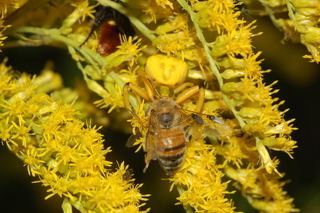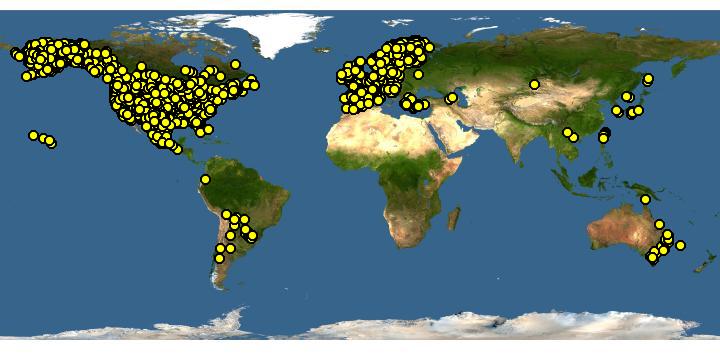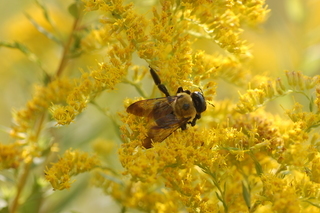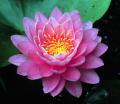|
Organizers
We plan to study goldenrod sites across North America each fall.
Our organizers at the American Museum of Natural History (John Ascher),
National Biological Information Infrastructure (Annie Simpson),
Lost Ladybug Project (John Losey),
and Discover Life (John Pickering)
invite you to join us.
Technical support
Discover Life will provide you with web tools to report, identify, map, and score your observations.
Please contact us, if you wish to join the Goldenrod Challenge or our other projects,
start a photo album, or need technical help.
Goals
-
The Goldenrod Challenge is a fun entry point into learning about nature through photography.
Our larger educational goal is to provide the means for you to discover what
is known (and unknown) about all the living things that you find exploring
schoolyards, neighborhoods, parks, and other outdoor areas.
Participants will start personal electronic 'life lists' --
albums of digital photographs to document and map when and where they see species.
These life lists will help you learn about nature and share your experiences.
-
Our scientific goal is to understand the impact of weather and other environmental changes on
the distribution, abundance and interactions of species at continental scales. By combining data
from participants' personal life lists and filtering them to include only high-quality observations,
we will be able to better understand, and ultimately manage, thousands of species around the planet.
|
World's smallest vultures

Can you find the six species in this image?
What are they doing?
Can you describe their ecological relationships with each other?
Click on the image, scroll to the bottom,
set the resolution, then click on each image to advance to the next.
|
Why goldenrods?
|
Goldenrods are plants in the genus Solidago.
Their native range is centered in North America and Western Europe (see map).
There are about 140 species worldwide, half of which occur in North America.
While goldenrods are beautiful, some are invasive weeds. They plague parts of Italy, for example.
In much of North America, particularly east of the Rocky Mountains, goldenrods often
grow in dense patches of showy yellow flowers. Flowering starts around August in
northern states and ends around November in southern states. Goldenrod patches attract
large numbers of insects, spiders, and other arthropods that are active in the fall.
From our perspective, goldenrod patches serve as fantastic natural "traps" for
us to photograph and compare these species-rich communities over time and space.
|

click on map for distributional details
|
Embracing technology
Digital technology has captured the hearts and minds (and hands) of the younger generation.
Instead of exploring the woods and playing outside like their grandparents did,
many children now occupy their spare time inside with video games and computers.
Richard Louv's "Last Child in the Woods: Saving Our Children from Nature-Deficit Disorder"
is a call for action. How do we get people back outside and to the healthy benefits
of interacting with nature?
The Goldenrod Challenge hopes to engage participants by
combining the natural world, cool technology, team work, and a spirit of competition.
Let's embrace the technology that motivates millions of people to share
photographs through social networking sites, compete in on-line games, and solve the
challenges of Lara Croft's addictive virtual world.
But let's make it even more challenging and exciting.
Let's combine the wonders of our real and virtual worlds.
Some reasons to get outside with a camera and participate:
-
nature's complexity never gets boring and exceeds even the most sophisticated computer games;
-
hunting for species appeals to parts deep in our hunter-gatherer brains;
-
successfully photographing a moving insect on a flower on a windy day requires more skillful hand-eye
coordination (and patience) than using a joy-stick to kick-box an opponent or race around a virtual track;
-
identifying unknown species is a task that requires more interactive skills than Google possesses -- it requires team work;
-
building a winning 'life list' could keep you engaged for years, providing enjoyment
from childhood to old-age;
-
the information you collect and share will be more beneficial to
science, society, and the environment than all your "friends" and their photographs on your social networking site.
|







